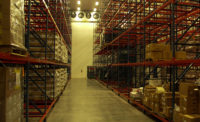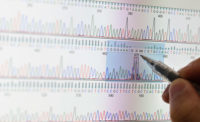Regulations & Legislation
Picture this: FSIS resurrects fight to take photos

In December, the Food Safety Inspection Service (FSIS) issued Directive 8010.2, Revision 5, Investigative Methodology, which provides updated instructions to agency officials for conducting compliance investigations. Although the revised directive is not substantially different than the previous version, it does contain additional language regarding the use of photographs as an investigative technique. In addition to indicating that compliance officers may take photographs of product or conditions to be in violation of the Inspection Acts, the revised directive asserts that compliance officers may photograph “facilities, premises, inventory, equipment, or operations as a method or technique of conducting examinations and investigations to verify products are safe, wholesome, not adulterated, properly labeled, and that establishments are operating under sanitary conditions.”
The agency’s assertion it has the authority to take photographs at regulated establishments is nothing new. FSIS has maintained this position for quite some time. But the recent revision has caused many establishments to again question whether the agency truly has the authority to take photographs and what actions can be taken when there is a demand to take them.
Although FSIS claims it has the statutory authority to take photographs, neither the acts nor the regulations specifically provide this authority. Moreover, there is no definitive case law that supports the agency’s alleged authority to take photographs inside a regulated establishment. Although there is some case law to support aerial photography outside of a production facility, there is no case law that definitely supports the government’s use of photography inside a plant.
One of the obvious concerns with any regulatory agency’s request to take photographs inside is the potential inadvertent release of trade secret and confidential commercial information. Because of this concern, it is recommended that regulated entities develop a written policy that addresses taking photographs inside facilities. The policy should specify whether photographs are permitted and, if so, under what conditions they may be taken. If the company’s policy prohibits photography, the policy should state why the use of cameras or photography is prohibited. For example, the establishment may state that its policy prohibiting photographs is intended to prevent the unauthorized disclosure of confidential and proprietary information potentially captured by the photographs.
If an FSIS official requests to take an interior photo and the establishment’s policy prohibits them, an establishment can politely inform the official of the policy and provide it in writing. If the official continues to assert authority to take photographs, then the establishment may have to consider contacting legal counsel for advice. According to the revised directive, if compliance officers are denied access to facilities, inventory or records through photographs, they may contact the Enforcement and Litigation Division (ELD) to request a subpoena. Although it is unclear whether the agency would actually request a subpoena if prevented from taking a photo, an establishment may have to prepare for a legal challenge it that occurs.
Based on conversations with agency officials in the past, we believe there is at least one situation in which the agency would aggressively assert authority to take photographs. The agency has asserted that it has the authority to photograph documents that it is entitled to “copy” as a matter of law, e.g., distribution records, HACCP and SSOP records. According to the agency, the taking of photographs is just another means to “copy” records.
If the request to take photographs is limited to documents, an establishment may decide to allow the photos; however, to ensure its permission is not deemed as a waiver of its policy against photographs and to protect the disclosure of trade secret and confidential commercial information, an establishment can take several actions.
First, it can request in writing from the FSIS official that the photographs would be limited to the documents requested and that the photographs are taken pursuant to the agency’s authority to “copy” documents. According to agency officials in the past, agency officials would be willing to provide this letter.
Second, the establishment can provide the agency a letter stating it will allow photographs for the limited purpose of copying documents and that the consent to copy documents should not be construed as a waiver of its policy on photographs.
Third, prior to allowing the agency to photograph the records, the establishment can stamp all documents “Trade Secret and/or Confidential Commercial Information” and request FSIS either return the photographs to the establishment or destroy them after their use.
Fourth, the establishment can require that the photographs be taken in a separate facility (headquarters) or secured room so they will not capture other trade secret or confidential commercial information.
The agency’s use of photography inside establishments will continue to be a contentious issue, at least until the courts rule on the matter. Until that happens, the best way for establishments to deal with the issue is to have a written policy that clearly sets forth the procedures that will be followed when there are requests for photograph and follow the procedures, unless otherwise advised by legal counsel. NP
Looking for a reprint of this article?
From high-res PDFs to custom plaques, order your copy today!






